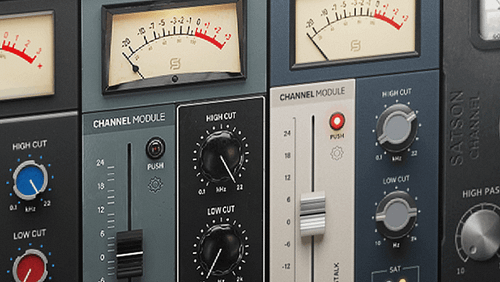The story behind StonEQ 4K
Who would have thought that a company making pipe organ switching systems would have shaped the sound of millions of records?
Colin Sanders, a visionary and entrepreneurial engineer founded Solid State Logic in 1969 at the age of 22. At first, focused on electronic controls for church organs, the decision to add a computer control to recording consoles started in 1976. Shortly after founding Solid State Logic, Sanders built Acorn Studios in the small village of Stonesfield, England. After realising that nothing on the market was appropriate for his needs, Sanders took matters into his own hands.
Now, 45 years and a ‘color palette’ of tones later, it is clear that Colin Sanders’ legacy and his solid state audio consoles aren’t going anywhere soon – especially the classic 4000 series. But what makes these consoles so iconic? What are the differences between the variations of the 4000 consoles? Let’s dive in.
The 4K Sound
When the first 4000 Series console came out, it marked the beginning of one of the most beloved sounds in music history. Big recording studios around the world incorporated them into their control rooms between the 70’s, 80’s and 90’s, all because of their transparency, flexibility, and punchiness.
But, as its name suggests, there wasn’t only one type of console, there were a series of iterations of the 4000 console, and one of the main changes was their EQ section. They were all 4 bands fully parametric equalizers, but over the years, each variation of the circuit provided different sonic character. They were named after the color of the Low Frequency knob: the Brown knob (02 type), the Orange knob (232 type), the Black knob (242 type) and finally the Pink knob* (292 type), which instead comes from the color of the High Frequency knob.
The black and brown knob EQs are still two of the most legendary equalizer modules to date. The Brown EQ was the first module to be developed in 1979; it was more musical and easy to dial in, with the slope of the sides of the Bell or the Shelf getting altered with the degree of cut/boost (+/-15dB). On the other hand, the black knob became the standard of the 4000E consoles and is a more surgical and clean EQ, with a cut and boost that goes up to +/- 18dB. Both of them allow the user to control the tone of the sound source in a way that wasn’t previously possible.
StonEQ 4K
Sonimus wanted to pay tribute to Collin Sanders and these classic EQ tones, developing an original spin on the 4000 EQ module: the StonEQ 4K.
Far from trying to create an exact replication of these EQ, StonEQ has its own personality. After both Brown and Black knob units were analyzed, Sonimus merged their best characteristics into one single plugin. Narrower settings in the Q values makes the EQ resemble the Black knob. While when the bell is set wider, its sound is more similar to the Brown unit.
The plugin also allows the user to control the amount of drive (or harmonic distortion) added by the module, ranging from very subtle – passing through warm levels – all the way to overdrive.
A new and original color for your equalizer collection. Great for use on guitars and vocals, or if you want to make your 808s more aggressive, a rock solid EQ plugin ready to help you sculpt your tracks in any way you want.
Did you know about the story behind StonEQ and the 4000 EQ colors? How do you use StonEQ? Let us know in the comments and make sure to check our blog and social media for future tips and tutorials on how to use the Sonimus StonEQ 4K in your mixes.
Carlos Bricio, Music Producer & Sound Engineer







Leave A Comment
You must be logged in to post a comment.